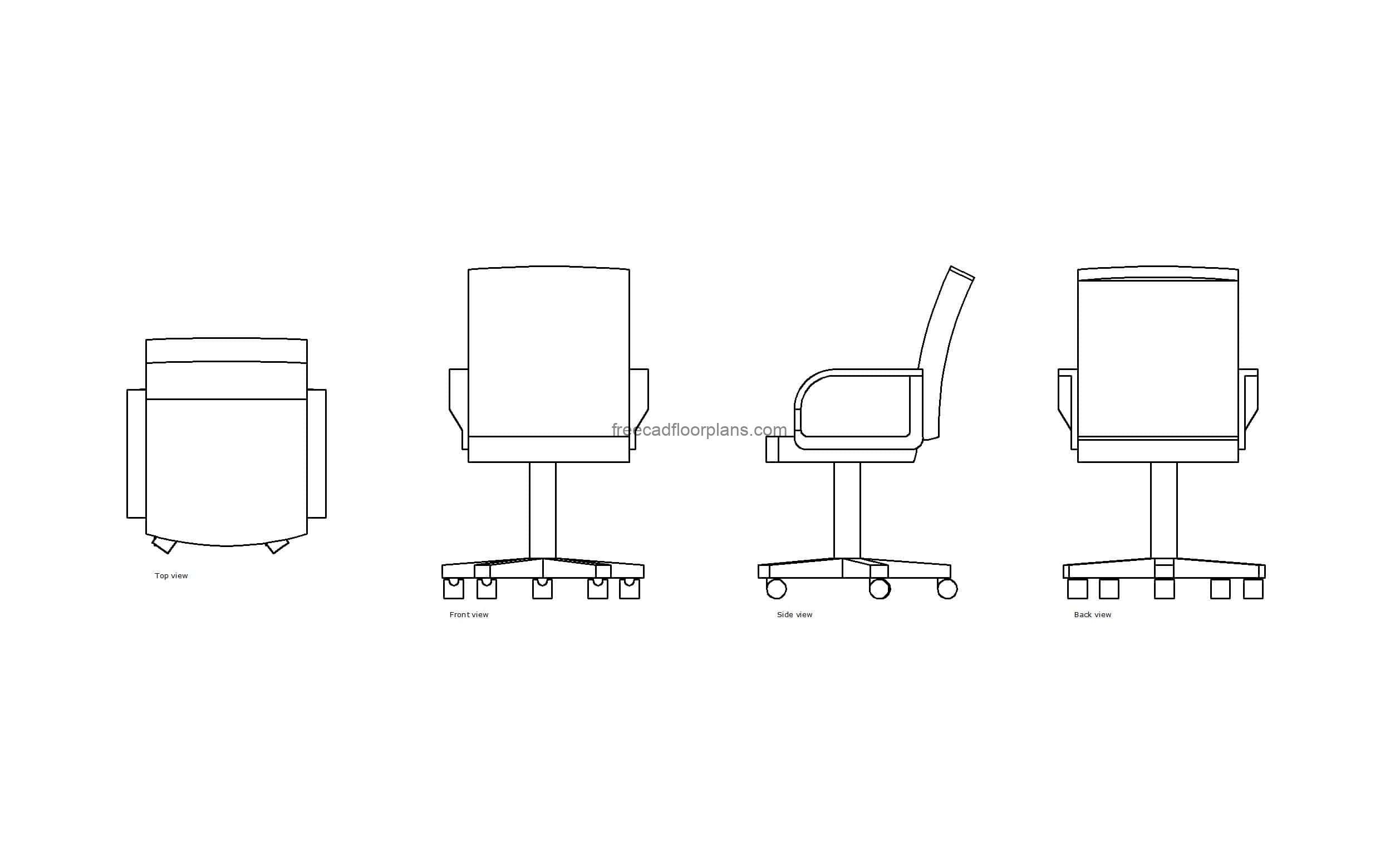CAD Block Design Considerations

Creating a well-designed CAD block for a chair back elevation is crucial for ensuring accurate representation and efficient use in your drawings. This involves careful consideration of key dimensions, detail levels, and best practices for organization.
Key Dimensions and Parameters
The key dimensions and parameters for a chair back elevation CAD block depend on the specific design of the chair. However, some common dimensions include:
- Overall height of the chair back
- Width of the chair back
- Depth of the chair back
- Height of the backrest
- Width of the backrest
- Thickness of the chair back material
- Radius of any curves or angles in the chair back
- Location of any holes or cutouts in the chair back
It’s essential to include all necessary dimensions and parameters to ensure accurate representation of the chair back in your drawings.
Levels of Detail for CAD Blocks
CAD blocks can be created at different levels of detail, depending on the specific needs of the project. Here are three common levels:
- Basic: These blocks provide a simplified representation of the chair back, with only the essential features and dimensions. They are suitable for general layout drawings or preliminary designs.
- Detailed: These blocks include more detail, such as specific materials, finishes, and construction details. They are useful for construction drawings or detailed design plans.
- Assembly: These blocks represent the assembled chair back, including all components and their relationships. They are helpful for visualizing the final product and for creating assembly instructions.
The appropriate level of detail for a CAD block depends on the purpose of the drawing and the required level of accuracy.
Importance of Units and Scaling
Using accurate units and scaling is critical for creating reliable CAD blocks. Consistency in units and scaling ensures that all dimensions are accurate and that the block can be used seamlessly in different drawings.
For example, if you are working in millimeters, ensure that all dimensions in the block are also in millimeters. Similarly, if you are using a specific scale for your drawings, make sure that the block is scaled accordingly.
Best Practices for Creating User-Friendly CAD Blocks, Chair back elevation cad block
Here are some best practices for creating well-organized and user-friendly CAD blocks:
- Use descriptive names for blocks, making it easy to identify their purpose.
- Group related objects within the block for better organization and clarity.
- Use layers effectively to separate different elements of the block, making it easier to edit or modify.
- Include attributes to store relevant information, such as material, finish, or manufacturer details.
- Document the block with clear instructions and explanations to ensure users understand its functionality.
Following these best practices will help you create CAD blocks that are accurate, efficient, and easy to use.
Applications of Chair Back Elevation CAD Blocks

Chair back elevation CAD blocks are versatile tools that streamline the design process in various architectural and interior design projects. These blocks offer numerous benefits, including time efficiency, accuracy, and seamless communication among design teams.
Creating Furniture Layouts and Space Planning
Chair back elevation CAD blocks play a crucial role in furniture layouts and space planning. Designers can easily incorporate these blocks into their floor plans to visualize the placement of chairs and other furniture pieces. By using these blocks, designers can:
- Determine the optimal chair arrangement for different room configurations.
- Evaluate the flow of movement within a space.
- Assess the adequacy of available space for each chair.
- Ensure that the chair dimensions are compatible with the surrounding furniture and architectural elements.
This meticulous planning process helps to create comfortable, functional, and aesthetically pleasing spaces.
The chair back elevation cad block, a mere digital blueprint, can only offer a static representation of comfort. It yearns for the tangible reality of a chair that truly supports the weary spine. Perhaps, the solution lies in the realm of artist chairs designed for back pain , where ergonomic design meets artistic inspiration.
These chairs, with their adjustable features and focus on posture, might bridge the gap between digital design and the physical experience of relief. Perhaps, one day, the chair back elevation cad block will be transformed into a tangible haven for the aching back.
A chair back elevation cad block is a technical drawing that captures the essence of a chair’s form, but it lacks the soul of a truly timeless piece. The graceful curves and intricate carvings of an antique channel back chair whisper tales of bygone eras, stories etched into its worn wood.
The cad block, though precise, cannot convey the weight of history that a chair bears, the silent witness to countless moments of laughter, tears, and quiet contemplation.